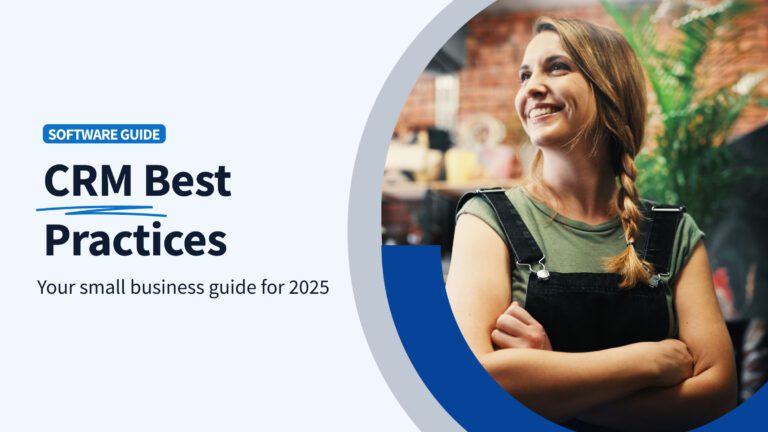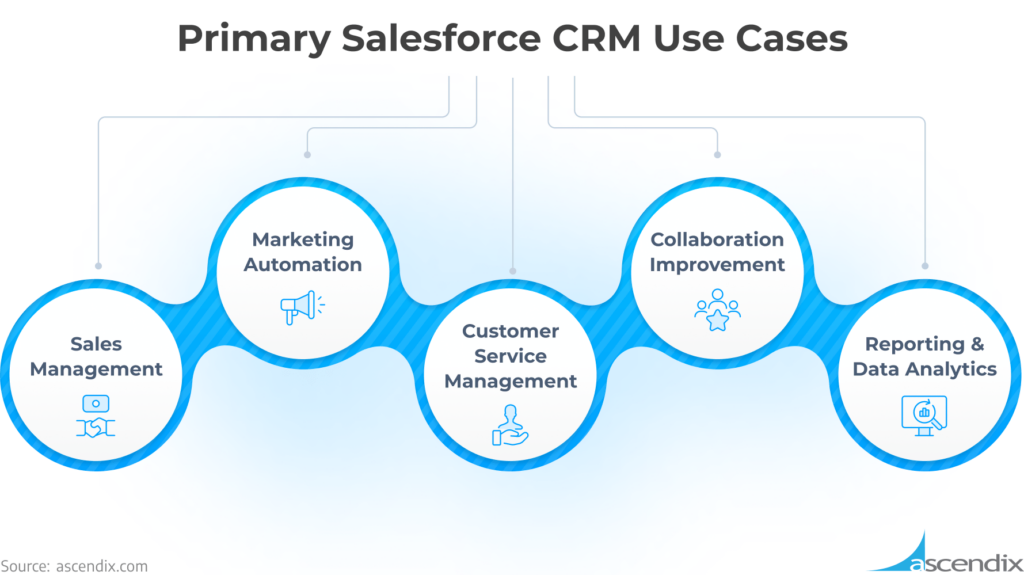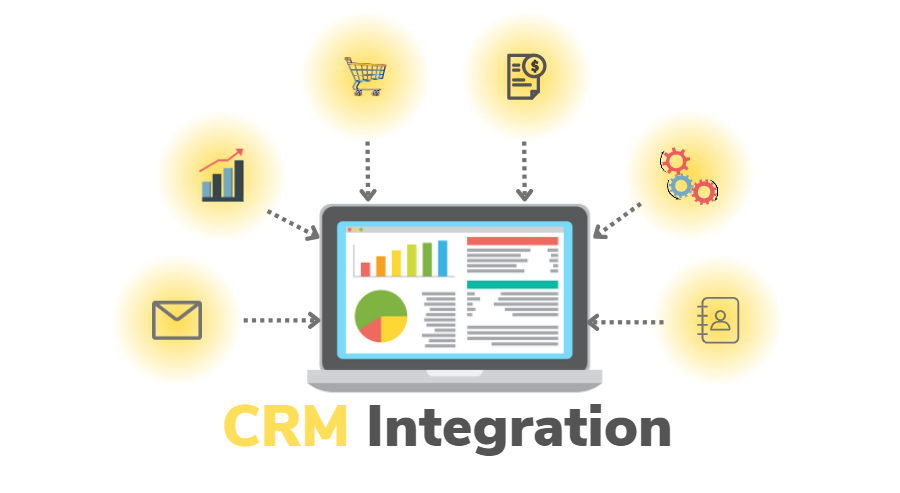
Small Business CRM Security in 2025: Navigating the Digital Frontier
The digital landscape is evolving at warp speed. For small businesses, this means embracing technology to stay competitive, but it also means facing a growing threat: cybersecurity. Customer Relationship Management (CRM) systems are the lifeblood of many small businesses, housing sensitive customer data. In 2025, the security of your CRM isn’t just a good practice; it’s a necessity. This article delves into the critical aspects of small business CRM security, providing insights and strategies to safeguard your valuable information in the coming years.
The Rising Tide of Cyber Threats: Why CRM Security Matters More Than Ever
The threat landscape is becoming increasingly complex and sophisticated. Small businesses are often seen as easier targets than larger corporations, making them prime targets for cyberattacks. Here’s why CRM security is non-negotiable:
- Data Breaches are Costly: Beyond the immediate financial losses, data breaches can lead to reputational damage, loss of customer trust, and legal repercussions.
- Regulatory Compliance: Regulations like GDPR, CCPA, and others are constantly evolving. Non-compliance can result in hefty fines.
- Ransomware Attacks: Ransomware is a pervasive threat, and CRM systems are vulnerable targets. Encrypting your data and demanding a ransom can cripple your business.
- Phishing and Social Engineering: Cybercriminals are becoming adept at tricking employees into divulging sensitive information.
In 2025, the sophistication of these threats will likely increase, making proactive security measures crucial.
Key Security Challenges for Small Business CRMs in 2025
Several specific challenges will define the landscape of CRM security for small businesses in the coming years. Understanding these challenges is the first step in building a robust security strategy.
1. The Proliferation of Cloud-Based CRM Systems
Cloud-based CRM solutions offer many benefits, including cost-effectiveness, scalability, and accessibility. However, they also introduce new security considerations. Data stored in the cloud is vulnerable to various threats, including unauthorized access, data breaches, and denial-of-service attacks. In 2025, small businesses must carefully evaluate the security posture of their cloud providers and implement robust security measures to protect their data.
2. Remote Work and Mobile Devices
The rise of remote work has expanded the attack surface. Employees accessing CRM data from home networks and mobile devices introduce new risks. Securing these endpoints is essential. This includes implementing strong authentication, device management policies, and secure VPN connections.
3. The Internet of Things (IoT)
The increasing use of IoT devices in business operations introduces new vulnerabilities. These devices can be exploited to gain access to your network and CRM data. Small businesses must implement security measures to protect their IoT devices and prevent them from becoming entry points for cyberattacks.
4. Supply Chain Attacks
Cybercriminals are increasingly targeting the supply chains of businesses. This involves compromising third-party vendors or partners to gain access to their systems. Small businesses must carefully vet their vendors and implement security measures to protect against supply chain attacks.
5. The Skills Gap
The cybersecurity skills gap is a significant challenge for small businesses. Finding and retaining qualified cybersecurity professionals can be difficult and expensive. This means that small businesses must rely on a combination of automation, managed security services, and employee training to improve their security posture.
Essential Security Measures for Your CRM in 2025
Protecting your CRM requires a layered approach to security. Here are essential measures to implement:
1. Strong Authentication and Access Controls
This is the first line of defense. Implement strong passwords, multi-factor authentication (MFA), and role-based access control (RBAC). Regularly review and update user access permissions to ensure that employees only have access to the data they need.
- Multi-Factor Authentication (MFA): Requires users to verify their identity using multiple methods, such as a password and a code from a mobile app or email.
- Role-Based Access Control (RBAC): Limits user access based on their job function, ensuring that employees only have access to the data they need.
- Regular Password Updates: Enforce strong password policies and require regular password changes.
2. Data Encryption
Encrypting your data protects it from unauthorized access, even if a breach occurs. This includes encrypting data at rest (stored on servers) and in transit (when being transmitted over a network). Consider end-to-end encryption if your CRM solution supports it.
3. Regular Backups and Disaster Recovery
Backups are crucial for data recovery in the event of a cyberattack, data loss, or system failure. Implement a regular backup schedule and test your recovery procedures. Ensure that your backups are stored securely, preferably offsite.
- Automated Backups: Schedule regular backups to minimize data loss.
- Offsite Storage: Store backups in a separate location to protect against physical damage or disasters.
- Regular Testing: Test your recovery procedures to ensure that you can restore your data quickly and efficiently.
4. Security Audits and Vulnerability Assessments
Regularly assess your CRM system for vulnerabilities. Conduct security audits and vulnerability assessments to identify and address potential weaknesses. This can involve penetration testing, code reviews, and security configuration reviews.
5. Employee Training and Awareness
Your employees are your first line of defense. Provide regular security awareness training to educate employees about phishing, social engineering, and other threats. This training should cover topics such as password security, data privacy, and safe browsing practices.
- Phishing Simulations: Simulate phishing attacks to test employee awareness and identify vulnerabilities.
- Data Privacy Training: Educate employees about data privacy regulations and best practices.
- Safe Browsing Practices: Teach employees how to identify and avoid malicious websites and downloads.
6. Implement a Web Application Firewall (WAF)
A WAF helps protect your CRM from web-based attacks, such as cross-site scripting (XSS) and SQL injection. A WAF sits in front of your web application and filters malicious traffic.
7. Choose a Secure CRM Provider
If you’re using a cloud-based CRM, choose a provider with a strong security track record. Evaluate their security certifications, data privacy policies, and incident response procedures. Ensure that the provider complies with relevant data privacy regulations.
8. Monitor and Log Activity
Implement security monitoring and logging to detect and respond to security incidents. Monitor user activity, system logs, and network traffic for suspicious activity. Use security information and event management (SIEM) tools to collect, analyze, and correlate security data.
9. Incident Response Plan
Develop an incident response plan to guide your actions in the event of a security breach. This plan should outline the steps to take to contain the breach, investigate the cause, and recover your data. Regularly test and update your incident response plan.
Specific Security Considerations for Different CRM Deployment Models
The security measures you need to implement will vary depending on how your CRM is deployed.
On-Premise CRM
On-premise CRM systems give you more control over your data and security. However, they also require more responsibility. You are responsible for securing the servers, network, and software. This includes implementing strong physical security, network segmentation, and regular software updates.
Cloud-Based CRM
Cloud-based CRM systems offer convenience and scalability. However, you must rely on your provider for many security aspects. You are responsible for securing your data and user accounts. This includes implementing strong access controls, data encryption, and regular security audits.
Hybrid CRM
Hybrid CRM systems combine on-premise and cloud-based deployments. This gives you flexibility but also introduces additional complexity. You must secure both the on-premise and cloud components of your CRM system. This includes implementing strong security measures for both environments and integrating your security controls.
Emerging Technologies and Their Impact on CRM Security in 2025
Several emerging technologies will play a significant role in shaping the future of CRM security.
1. Artificial Intelligence (AI) and Machine Learning (ML)
AI and ML can be used to automate security tasks, detect threats, and improve incident response. For example, AI can be used to analyze user behavior and identify suspicious activity. ML can be used to detect and prevent phishing attacks.
2. Blockchain
Blockchain technology can be used to secure CRM data and improve data privacy. Blockchain can be used to create a tamper-proof audit trail of data changes. It can also be used to implement secure data sharing and access control.
3. Zero Trust Security
Zero trust security is a security model that assumes that no user or device can be trusted by default. This model requires all users and devices to be verified before accessing CRM data. Zero trust can improve CRM security by reducing the attack surface and preventing unauthorized access.
4. Automation and Orchestration
Automating security tasks can improve efficiency and reduce the risk of human error. Security orchestration tools can be used to automate incident response and streamline security workflows.
Building a Security-Conscious Culture
Security is not just about technology; it’s also about people and processes. Building a security-conscious culture is essential for protecting your CRM data. This involves educating employees about security threats, promoting a culture of security awareness, and empowering employees to report security incidents.
- Lead by Example: Management should prioritize security and demonstrate a commitment to protecting data.
- Open Communication: Encourage employees to report any suspicious activity or security concerns.
- Regular Training: Provide ongoing security training to keep employees informed about the latest threats and best practices.
The Future of CRM Security: Staying Ahead of the Curve
In 2025, CRM security will be a dynamic and evolving field. Small businesses must stay informed about the latest threats and technologies. This includes regularly reviewing your security policies, conducting security audits, and investing in employee training. By taking a proactive approach to security, you can protect your CRM data and safeguard your business.
Here are some key takeaways for 2025 and beyond:
- Prioritize Proactive Security: Don’t wait for a breach to happen. Implement security measures proactively.
- Embrace Automation: Leverage automation to streamline security tasks and improve efficiency.
- Stay Informed: Keep up-to-date on the latest threats and technologies.
- Invest in Training: Provide regular security training to employees.
- Partner with Experts: Consider working with a managed security services provider (MSSP) if you lack the internal expertise.
By following these guidelines, small businesses can navigate the evolving threat landscape and protect their valuable CRM data in 2025 and beyond. Remember that security is not a one-time project; it is an ongoing process that requires continuous effort and adaptation.


